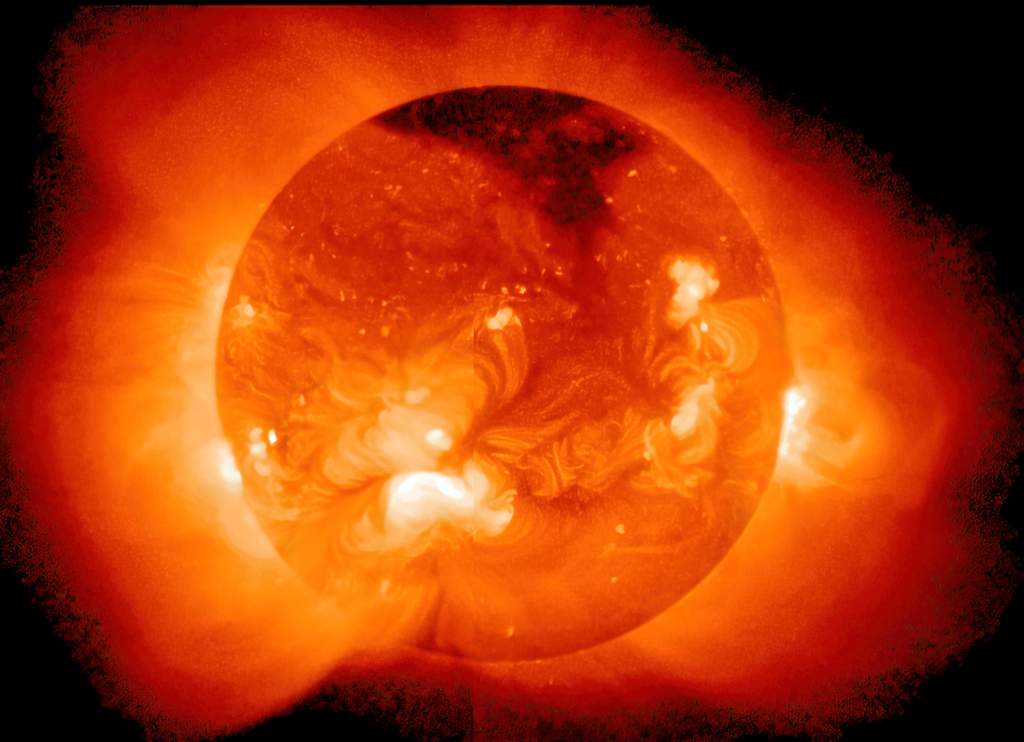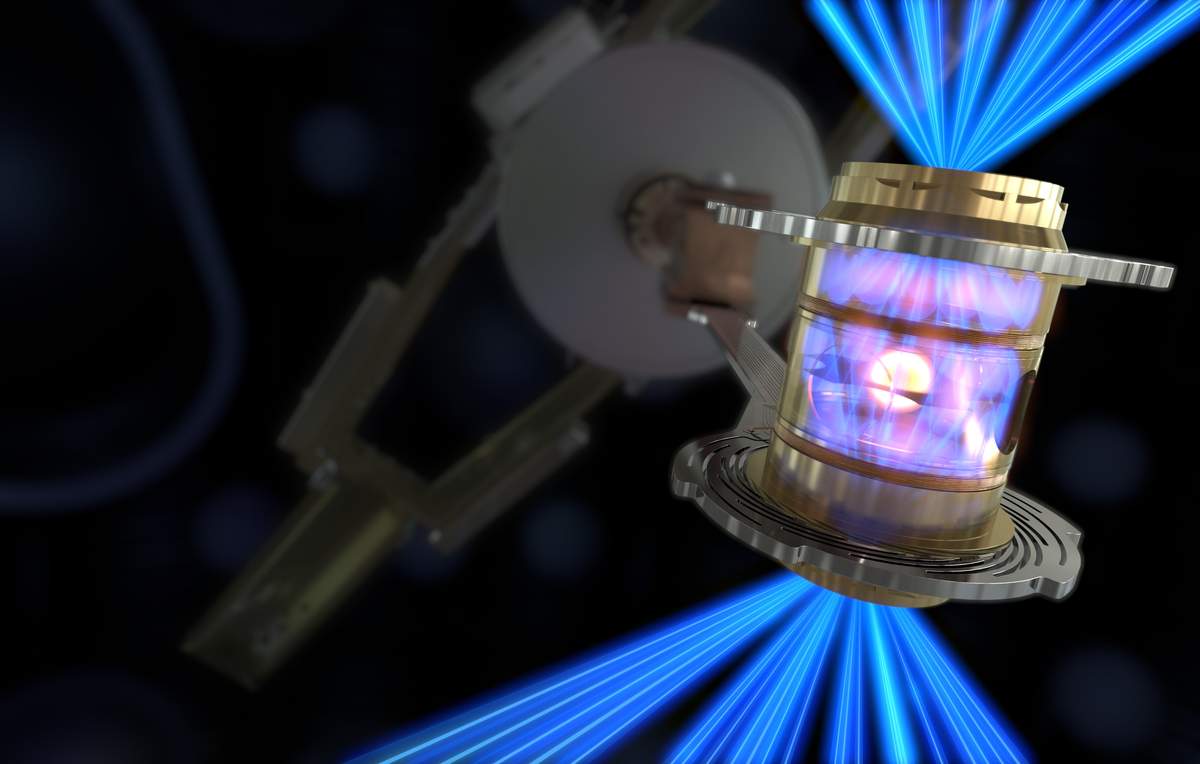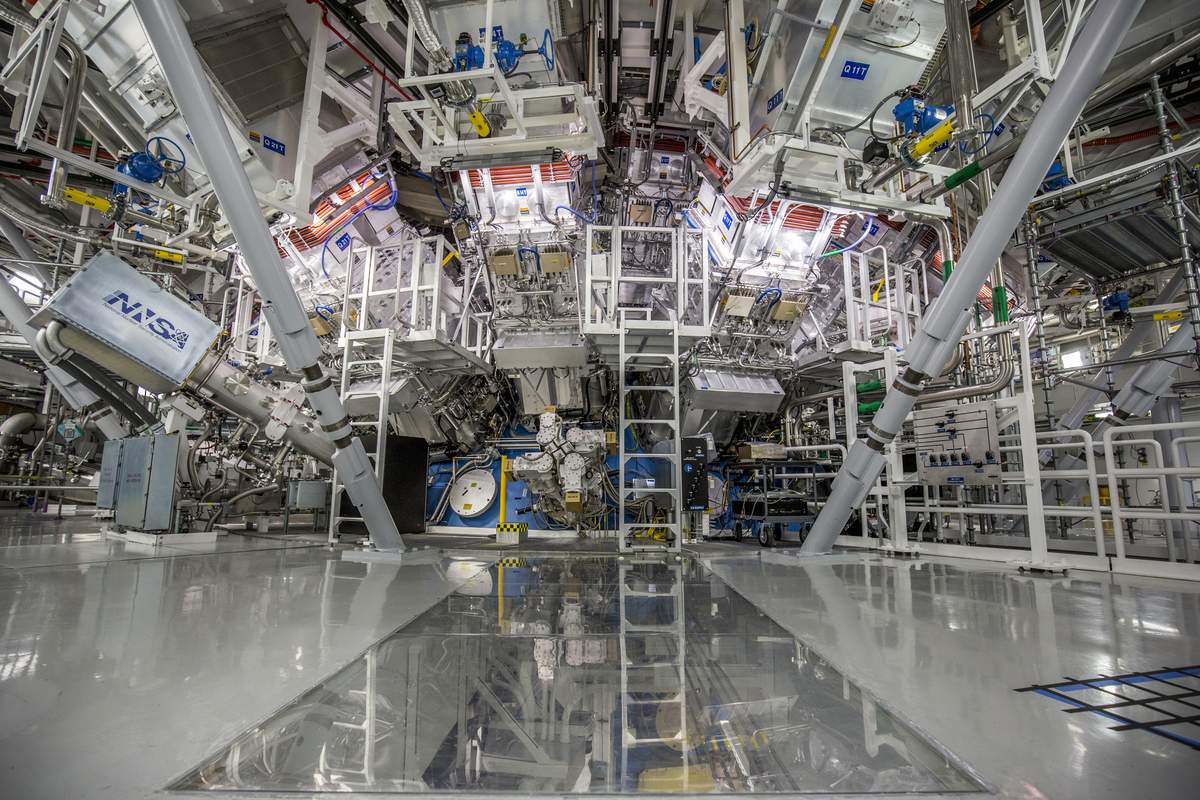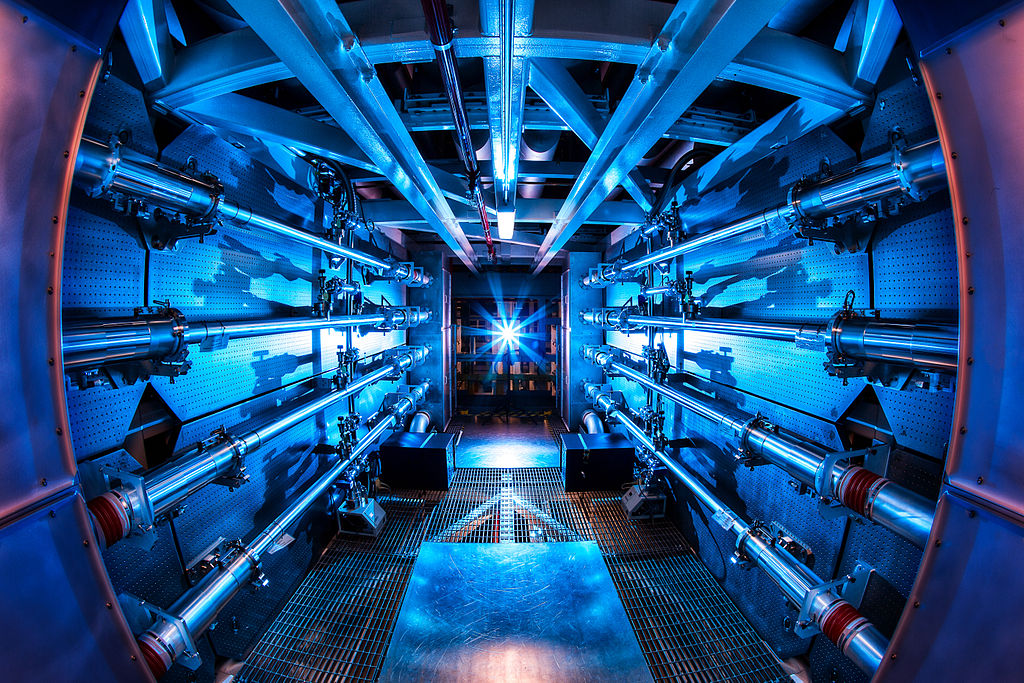Livermore, California —(Map)
US scientists announced a huge step forward for fusion energy. For the first time ever, they got more energy out of the process than they put into it. Fusion power is a long way off, but the news is major progress toward a powerful, clean energy source.
Fusion energy is created when hydrogen atoms “fuse” together (join). This reaction is what gives the Sun and other stars their incredible energy. Importantly, fusion reactions don’t produce much harmful pollution.

(Source: NASA Goddard & Yohkoh/ISAS [Public domain], via Wikimedia Commons.)
On Tuesday, scientists in California announced that they had created a fusion reaction that produced more energy than they put into it. Scientists call this “ignition”. The work was carried out at the Lawrence Livermore National Laboratory (LLNL). It’s the first time researchers have ever reached ignition in a fusion reaction.
The scientists used 192 lasers to bring a tiny “fuel pellet” of hydrogen to a temperature hotter than the Sun. The lasers put about 2.05 “megajoules” of energy into the pellet. The reaction created 3.15 megajoules of energy – about 1.5 times more than was put in.
Many people see fusion energy as the perfect energy for the future. The fuel needed for fusion reactions is cheap, and there’s plenty of it. And if scientists can figure out how to make it work, fusion could easily provide all the energy the world needs with very little pollution.

(Source: Lawrence Livermore National Laboratory.)
That would be a huge improvement over the fossil fuels that led to global warming. It would also be much better than our current nuclear energy, which is known as “fission”. It works by splitting atoms, not joining them. Fission reactions produce dangerous radiation and pollution that must be stored safely for thousands of years.
Scientists have been working on fusion energy for over 60 years. But there are many challenges to recreating the energy of a star on Earth. Fusion requires intense heat and lots of energy. Controlling and containing the reaction is incredibly difficult.

(Source: Lawrence Livermore National Laboratory.)
That’s one reason Tuesday’s announcement is so exciting. But in spite of the progress, fusion energy is still a long way away. It’s true that the reaction created more energy than the 2.05 megajoules the lasers put into the fuel pellet. But powering up the lasers actually took closer to 300 megajoules. That means much more work is needed for a fusion reaction to really create more energy than it costs.
Scientists at LLNL already have ideas for improving their results. These include changing the design of the fuel pellet and using newer and more powerful lasers. Even so, it will be hard to turn their single fuel pellet experiment into a reliable power source.

(Source: Damien Jemison/LLNL[CC BY-SA 3.0], via Wikimedia Commons.)
Many other groups are also working on fusion projects. Some use lasers. Others use a magnetic field to contain the reaction. Many people believe the second method may lead more quickly to a useable power source.
LLNL’s successful experiment represents huge progress. It has proved to people and governments that fusion is worth working on. But it’s very unlikely that fusion power will be ready in time to help solve the climate crisis.
😕
This map has not been loaded because of your cookie choices. To view the content, you can accept 'Non-necessary' cookies.
